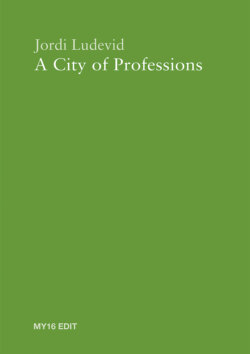Читать книгу A City of Professions - Jordi Ludevid Anglada - Страница 18
На сайте Литреса книга снята с продажи.
ОглавлениеThe Middle Ages
The medieval world Christianised the legacy of Hippocrates and Cicero and recognised very early on that religious practices (priests), legal practices (lawyers) and medical practices (doctors), because they were essential, had a strong impact on society. For this reason, their exercise had to be subject to regulation, some of it very strict. At the same time, they were considered liberal activities simply because they were freely exercised by free men. During this period, academic, guild-related and, in some cases, ecclesiastical and civil regulations began to be issued. This is how the first regulations or restrictions on professional activity came into being. Historians of medicine such as Paul Diepgen and Pedro Laín Entralgo attribute to Roger II of Sicily the first decree, published in 1140, which prohibited doctors who had not been approved by the State from practising on the island.
At that time, although knowledge (medical, legal, etc.) was acquired at universities, it was not defined or codified as it is today. The medieval university was dedicated to transmitting a curiosity for investigation, building on the work of learned precursors.
At that time already, the English expression «to take care of» captured the raison d’être of the professions, whose mission was to take care of the health of the soul, the health of the body and the health of material interests. Priests, doctors and lawyers – in short, the professions – came onto the scene to take care of human life that was threatened, contingent. This awareness of danger and risk, of limits, has always been present in the nature and in the essence and in the origins of the professions.
Somewhat later, Henry VIII, an enlightened king, founded the professional colleges in England, precisely in order to require them to be self-regulating and to delegate to them the powers of the State in the matters of their speciality. The College of Physicians still exists today as the Royal College of Physicians of London, making it the oldest of these institutions, founded in 1518. One of its tasks was to grant licences to practise medicine in London to those who passed their examinations, and to sanction those who failed to do so and those who engaged in malpractice. This licensing system was later extended throughout the country.
By way of example, some of the important tasks which the Royal College still fulfils today include:
•In conjunction with the Royal College of Surgeons, it awards the titles of «Member of the Royal College of Physicians» and «Licentiate of the Royal College of Physicians».
•It can authorise or disallow the practice of medicine in England, irrespective of university qualifications.
•It advises the UK government on health issues.
•Every 10 years it publishes a list of the most common diseases.
Finally, mention must be made of the birth and development of the important phenomenon of medieval guilds. From an economic point of view, a guild was a kind of holding of workshop companies dedicated to the same activity, mainly manual trades. It was a regulated holding, with exclusive functions and restrictions on practice, explicitly recognised by the political authorities. From a social point of view, the guilds were a powerful mechanism of urban cohesion and organisation, forming an essential part of the medieval social contract. Individuals were cared for by the guild, and it was the guild that guaranteed their economic, social and educational rights. In stark contrast to today’s professional institutions, the guilds had a great deal of power.
At a time when the economy was not industrial but agrarian, the space-time of the guilds was the burg, the medieval city. It was not the nation, or the continent, or the global world. However, following the French Revolution and the suppression of the guilds (1791 in France, 1834 in Spain), in their place, the nation state proclaimed itself the sole guarantor of those rights. And so it has continued to this day.
It is worth noting here that the guilds enacted a threefold self-regulation:17
•Economic self-regulation (guaranteeing members’ economic rights).
•Self-regulation in terms of training and education (guaranteeing the transmission of practical knowledge, workshop ownership, craftsmanship, philo technè, and proper conduct).
•Self-regulation of social protection (social services, aid).
17 As we know, self-regulation does not mean every man for himself, but entails a commitment that is aligned with the common interest.
